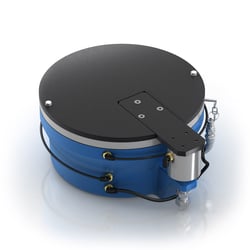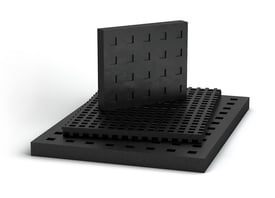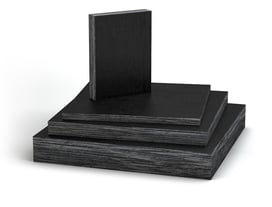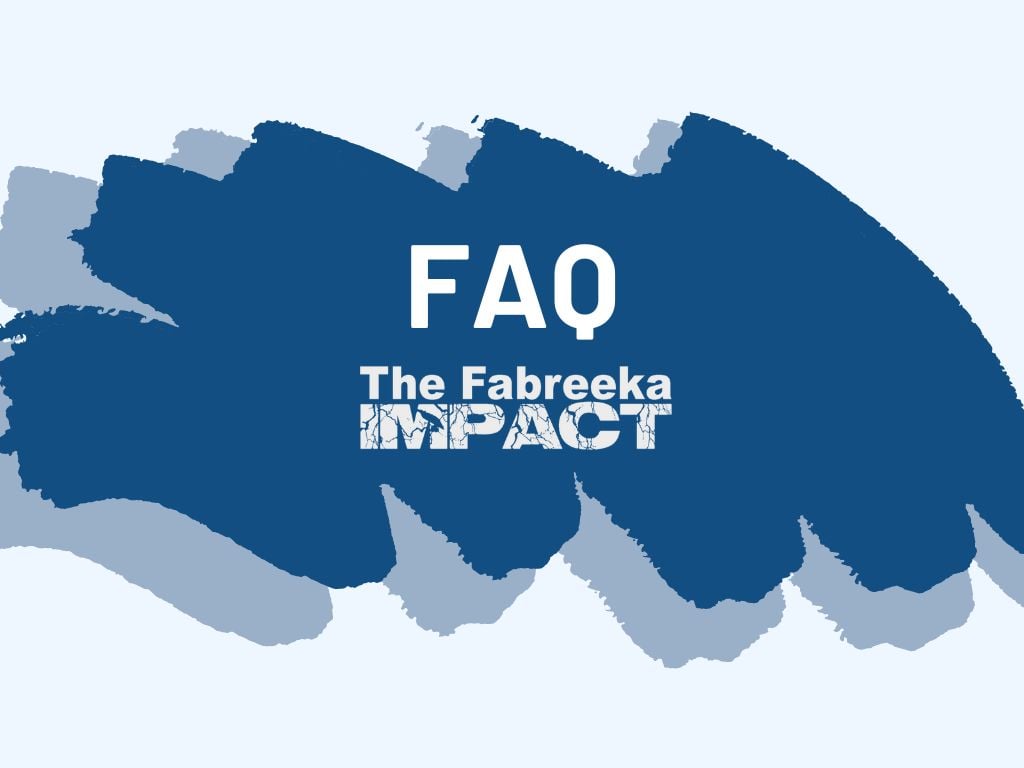Shock and vibration are everywhere in the world around us, but how do we distinguish between the two?
Although closely related, shock and vibration are fundamentally different forces that affect daily life and industry. However, these forces typically don't pose problems unless there is an excessive amount of shock and vibration. What are their major differences? How do you design solutions for potential problems?
Jump into this helpful guide for a crash course in shock and vibration ⤵️
- What's The Difference Between Shock and Vibration?
- When Are Shock and Vibration a Problem?
- What Is Vibration Isolation?
- How Is Shock Control Achieved?
- What Characteristics Must An Isolator Have?
What's The Difference Between Shock and Vibration?
Although related in certain circumstances, shock and vibration are unique in both the ways the are defined and addressed in the real world. Shock is a transient condition where the equilibrium of a system is disrupted by a sudden applied force. Vibration on the other hand, is a periodic or random oscillating force that occurs about a point of equilibrium.
In the video below, a hammer strikes a stationary object, applying shock that disrupts the equilibrium of the object. The next example shows vibrating guitar strings as they are plucked. The strings visibly vibrate, oscillating in a wave-like pattern. 👀
While fundamentally different, vibration is often present when shock is a factor as well. Let's go back to the hammer example one more time. When the hammer strikes the object, it transmits fast, powerful vibration forces throughout the system that disrupt it further beyond the point of impact.
However, discerning between shock and vibration is critical when designing solutions to mitigate those forces where it is needed.
READ NEXT: [ "What Is The Purpose of Vibration Isolation Pads?" ]
When are Shock and Vibration a Problem?
When shock and vibration forces are too great, they can cause disruptions or problems, for people, machines, buildings, and more. If the energy from vibration or shock is not properly dissipated, it manifests into equipment failures, structural damage, and other adverse effects. Vibration is particularly problematic when resonance occurs.
What is Resonance?
Resonance occurs when the frequency of excitation is equal to the natural frequency of the system. When this happens, the amplitude of vibration increases significantly. However, vibration problems are not as always as obvious as they might seem.
In hospitals, for example, MRI machines are particularly sensitive to vibration, even at the lowest frequencies. These minor disruptions causes double imaging or “ghosting” of the images that medical professionals rely on for their diagnoses.
What is Vibration Isolation?
When vibration forces are present and disrupt surrounding people, places, or equipment, there are solutions to mitigate the transmission. Vibration isolation is achieved when an isolator is placed between the vibrating unit and its support, and there fore reduces the transmission of vibration forces.👇
A vibration isolation system allows the inertia of the unit to oppose, and thereby reduce the vibratory motion transmitted to the support. As noted by Fabreeka Engineer, Marion Carter, "Vibration isolation does not absorb the energy, but instead isolates an object from resulting vibrations." With all this in mind, does shock control and reduction differ?
How is Shock Control Achieved?
As you might imagine, shock control differs from vibration isolation in practice. To reduce shock, the transmitted dynamic force that is applied to an object is greatly reduced, therefore mitigating the influence and transmission of shock throughout the body.
Shock control is achieved when a an isolator is placed between the unit creating the shock/impact and its support. This material, like the Fabreeka Pad, receives and absorbs most of the kinetic energy and then releases/dissipates it as heat over a longer period of time. Without some sort of material to absorb the shock, the kinetic energy would transmit a large dynamic force unto the environment.
Check out our blog post on shock reduction in mining equipment for a real-world example of shock control in practice!What Characteristics Should an Isolator Have?
In both shock and vibration applications, isolators are crucial to developing solutions to reduce the transmission of these forces. For vibration, the ideal isolator remains elastic for the life of its installation, meaning it must reliable, tough, and flexible.
Moreover, an ideal vibration isolator should have the capacity of the static weight of the unit as well as unbalanced dynamic forces. Ideally, the isolator’s natural frequency should be lower than the offending unit's disturbing frequency. However, there are some circumstances where isolators with higher natural frequency are better suited for the application.
Vibration Isolation Solutions from Fabreeka

At Fabreeka, we offer a range of vibration isolation solutions that consistently perform under these guidelines. Our high-tech pneumatic PAL Isolators (right) support payloads from 260 lbs all the way up to 100,000 lbs per isolator with a vertical natural frequency as low as 0.5 Hz. What's more, these isolators have low natural frequencies to isolate sensitive equipment, like CMMs, from vibration.
Another great vibration isolation material is Fabreeka's waffle-shaped Fabcel pad. Tough, and highly versatile, Fabcel comes in a range of thicknesses and densities for full vibration isolation customization.
 The pad's unique cell shape equips it with the necessary qualities to isolate vibrations in harsh environments. Fabcel works in a temperature range of -40°F to 200°F , and is impervious to most oils, water, steam, mildew, and brine. To fully reduce vibration transmission, Fabcel also comes available as washer to isolate bolt connections.
The pad's unique cell shape equips it with the necessary qualities to isolate vibrations in harsh environments. Fabcel works in a temperature range of -40°F to 200°F , and is impervious to most oils, water, steam, mildew, and brine. To fully reduce vibration transmission, Fabcel also comes available as washer to isolate bolt connections.
To learn more about vibration isolation, download our free "Reliable Solutions" brochure today! 👇
Isolators for Shock Control
When it comes to shock control, the ideal isolator must have the potential energy storage capacity to weather severe conditions. This means that the isolator must have adequate deflection capacity and stiffness to withstand the magnitude and frequency of impacts. Moreover, the isolator must reform or "rebound" into shape before the next shock event to maintain ideal isolation and equipment operation.
Fabreeka's Shock Control Solutions
As for our other materials, Fabreeka has provided resilient shock control solutions for mining applications, forging applications, and more. Our flagship elastomeric bearing pad, the Fabreeka pad, sets the industry standard for reliability and toughness.
For over 100 years, customers made use of Fabreeka pad's ridiculous toughness and versatility to control shock, protect equipment, and keep business booming. For more on the Fabreeka pad, check out our detailed product guide for applications, material specifications and more!
***
As the experts in shock and vibration, look no further than Fabreeka's dedicated team of engineers to provide you with the insight and expertise your project needs.
If you suspect shock or control may be affecting your equipment, environment, or employees, don't hesitate to reach out to our team today!
CALL TODAY: 1-800-322-7352



SUBMIT YOUR COMMENT